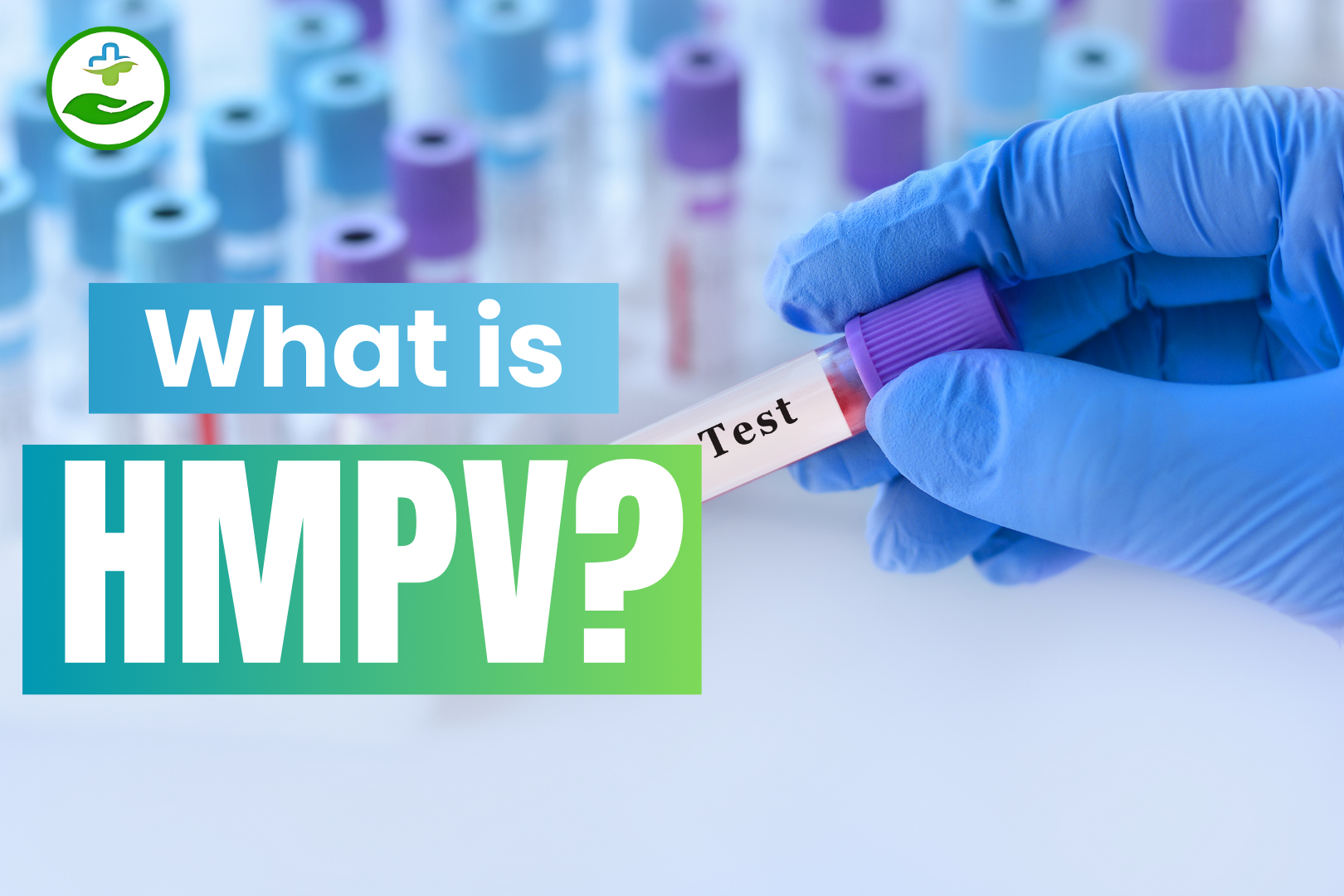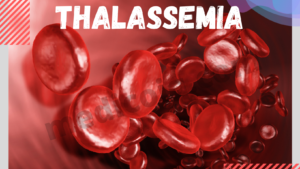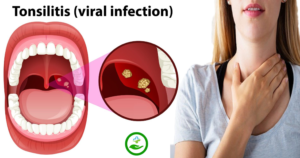Human Metapneumovirus (HMPV) is a respiratory virus that causes infections ranging from mild cold-like symptoms to severe illnesses like bronchiolitis and pneumonia. Discovered in 2001, it mainly affects young children, older adults, and those with weak immunity—especially during late winter and early spring.
Despite being common, many people are unaware of what HMPV is and how it spreads. This blog provides a simple and complete overview of HMPV—its symptoms, causes, treatment, and prevention—so you can stay informed and protect your health.
What Is HMPV?

Human Metapneumovirus, widely referred to as HMPV, is a respiratory virus that has emerged as a leading cause of respiratory illnesses globally. It primarily targets the lungs and airways, causing diseases that range from mild colds to severe conditions like bronchiolitis and pneumonia.
Despite its prevalence, what is HMPV is still a question many people are unfamiliar with, making it essential to understand its characteristics and impact.
A Brief History of HMPV
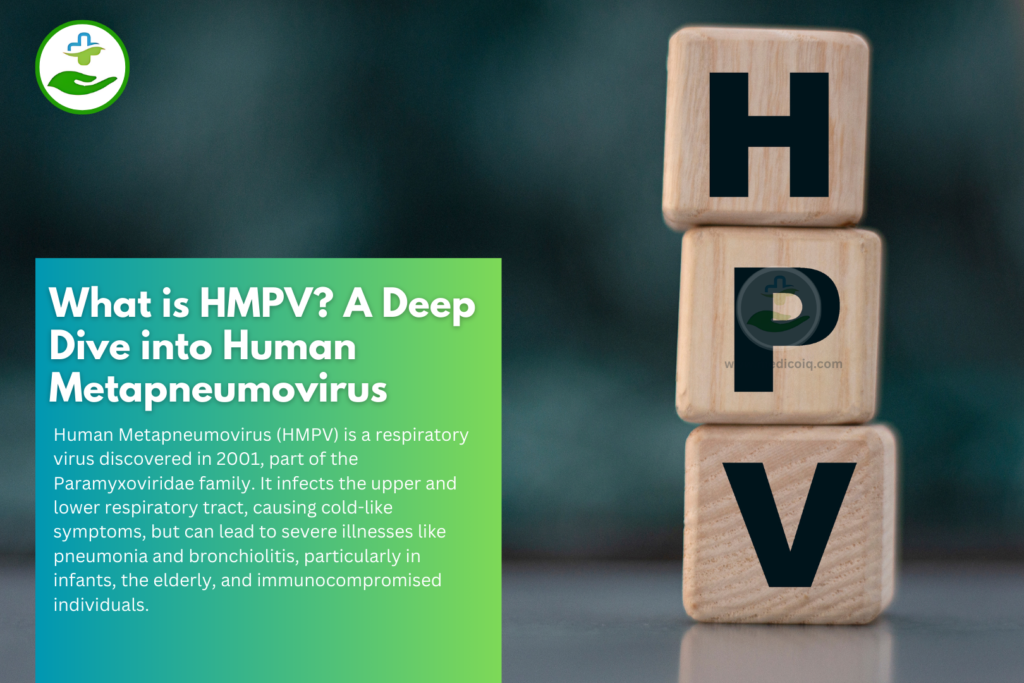
HMPV was first discovered in 2001 by Dutch researchers who identified the virus in respiratory samples from patients suffering from unknown respiratory illnesses. This discovery filled a crucial gap in the medical field, as many respiratory infections were previously attributed to unidentified pathogens.
Subsequent studies revealed that HMPV had been circulating silently in human populations for decades, with evidence suggesting it originated from a common ancestor shared with avian metapneumovirus.
Classification & Family
HMPV belongs to the Paramyxoviridae family, a group of viruses that includes other significant respiratory pathogens like Respiratory Syncytial Virus (RSV) and the measles virus.
It is a single-stranded RNA virus that lacks a protective lipid envelope, making it susceptible to environmental factors yet highly transmissible in crowded settings.
How HMPV Affects The Body
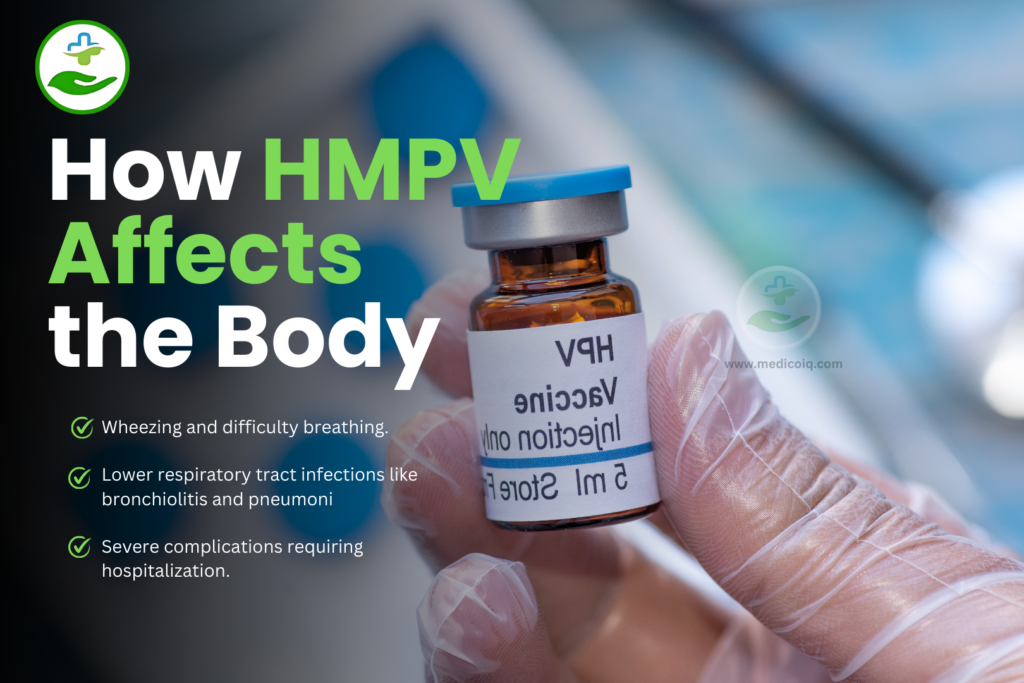
The virus specifically targets the respiratory tract, leading to inflammation and damage to the airways. Symptoms can vary based on the individual’s age and immune status.
In mild cases, it may present as a common cold with symptoms like runny nose, cough, and fever. However, in severe cases, especially among young children, the elderly, or immunocompromised individuals, HMPV can cause:
- Wheezing and difficulty breathing.
- Lower respiratory tract infections like bronchiolitis .
- Severe complications requiring hospitalization.
Significance Of Understanding HMPV
Knowing what HMPV is and how it operates is crucial for reducing its impact on public health. Despite its similarities to RSV, HMPV often goes undiagnosed due to overlapping symptoms with other respiratory illnesses.
By advancing diagnostic tools and increasing awareness, healthcare providers can better manage and treat this infection, especially in high-risk populations.
Causes of HMPV
Understanding how Human Metapneumovirus (HMPV) spreads is essential for preventing its transmission. This section explores the primary modes of spread, seasonality, and risk factors, providing a comprehensive view of what makes this virus a concern for public health. Let’s take a detailed look at the causes and factors contributing to HMPV infections.
Transmission Methods
- Respiratory Droplets: The most common way HMPV spreads is through respiratory droplets released when an infected person coughs, sneezes, or even talks. These droplets carry the virus, and anyone in close contact with them can inhale the particles, leading to infection. This highlights why respiratory viruses like HMPV are so contagious in crowded or poorly ventilated spaces.
- Direct Contact: Direct physical contact with an infected individual also plays a significant role in spreading HMPV. For example, shaking hands with someone who has the virus or touching their face can easily transfer the virus, especially if proper hand hygiene is not practiced. Understanding What is HMPV includes knowing how critical personal hygiene is in reducing transmission.
- Contaminated Surfaces: HMPV can survive on surfaces such as toys, doorknobs, or tables for extended periods. Touching these contaminated surfaces and then touching the mouth, nose, or eyes provides an easy pathway for the virus to enter the body. This mode of spread underscores the importance of frequent cleaning and disinfection in shared environments like schools and offices.

Seasonality
Human Metapneumovirus infections often show a clear seasonal pattern, peaking during late winter and early spring. This trend aligns with other respiratory viruses such as RSV and influenza. During this time, environmental factors like lower humidity and people spending more time indoors contribute to the increased transmission of HMPV.
Seasonal awareness is crucial to understanding What is HMPV and taking proactive measures during peak infection periods.
Risk Factors
Certain groups of people are more vulnerable to contracting HMPV or developing severe symptoms. These include:
- Infants and Young Children: Children, especially those under the age of 5, are more likely to experience severe respiratory symptoms because their immune systems are still developing. This makes them a high-risk group for complications such as bronchiolitis or pneumonia caused by HMPV.
- Elderly Individuals: With advancing age, the immune system’s ability to fight infections decreases. This puts older adults at a greater risk of developing severe complications from HMPV, such as respiratory distress or secondary bacterial infections.
- Immunocompromised People: Individuals with weakened immune systems due to chronic illnesses, chemotherapy, or organ transplants are highly susceptible to HMPV. For them, even a mild infection can escalate into a life-threatening condition. Recognizing What is HMPV and its impact on vulnerable populations can help prioritize preventive care.
Symptoms Of HMPV

Human Metapneumovirus (HMPV) can cause a wide range of symptoms, from mild to severe, depending on the individual’s age, immune status, and overall health.
Understanding the various symptoms associated with HMPV and how it manifests in different populations is essential for effective diagnosis and management. This section delves deeper into the common and severe symptoms of HMPV, as well as how these vary across different demographics.
1. Mild Symptoms
For most people, HMPV presents as a common cold or mild upper respiratory infection. The typical mild symptoms of HMPV include:
- Cough: cough and cold A persistent, dry or productive cough is a hallmark symptom of HMPV infection, often leading to irritation in the throat and chest.
- Runny Nose: Nasal congestion or a runny nose is common, often contributing to discomfort and difficulty breathing through the nose.
- Fever: Low-grade fever is often present, typically accompanied by chills and body aches.
- Sore Throat: A sore throat or scratchy throat is another common symptom of HMPV, contributing to discomfort when swallowing.
2. Severe Symptoms
In some cases, HMPV can lead to more serious respiratory problems, particularly in high-risk individuals. Severe symptoms can include:
- Difficulty Breathing: As HMPV affects the lower respiratory tract, it can cause inflammation in the lungs, leading to difficulty breathing. Individuals may experience rapid or shallow breathing and shortness of breath.
- Wheezing: Wheezing occurs when the airways become constricted due to inflammation, making it harder for air to flow through. This can be particularly concerning for young children or adults with pre-existing respiratory conditions.
- Bronchiolitis or Pneumonia: In severe cases, HMPV can cause bronchiolitis (inflammation of the small airways in the lungs) or pneumonia (infection of the lungs). These conditions can cause significant respiratory distress, requiring immediate medical attention.

Variations By Demographic
Human Metapneumovirus (HMPV) doesn’t affect everyone in the same way. The severity and symptoms of the infection can vary significantly depending on a person’s age, health status, and immune system strength. Here’s how HMPV impacts different demographic groups:
1. Infants & Young Children
- Most vulnerable group due to immature immune systems
- Commonly experience bronchiolitis, croup, or pneumonia
- May show symptoms like wheezing, high fever, difficulty breathing, and poor feeding
- HMPV is a leading cause of hospitalization for respiratory illness in children under 5
2. Older Adults (65+)
- More likely to develop serious lower respiratory tract infections
- Can lead to hospitalization or complications, especially in those with chronic conditions like COPD, asthma, or heart disease
- Often mistaken for other respiratory infections such as influenza or pneumonia
3. Immunocompromised Individuals
- Includes cancer patients, transplant recipients, or people with HIV/AIDS
- At high risk for prolonged illness, severe lung infections, and complications
- May require antiviral or supportive treatment in a hospital setting
4. Healthy Adults
- Often experience mild or no symptoms
- If symptoms appear, they resemble the common cold (sore throat, cough, congestion, fatigue)
- Can still transmit the virus unknowingly to vulnerable groups
5. People with Chronic Respiratory Conditions
- Individuals with asthma, COPD, or other lung diseases may experience exacerbation of symptoms
- Even a mild HMPV infection can trigger severe respiratory distress

Diagnosis Of HMPV: How Is It Diagnosed?
Accurately diagnosing HMPV (Human Metapneumovirus) can be challenging due to its similarity to other respiratory infections, like the common cold, influenza, or RSV. A combination of clinical evaluation, laboratory tests, and imaging is typically used to confirm the presence of HMPV. Here’s a concise look at the diagnostic methods and challenges involved in identifying What is HMPV.
Diagnostic Methods For HMPV
Clinical Evaluation
The first step in diagnosing What is HMPV is a thorough clinical evaluation. Healthcare providers assess the patient’s symptoms, medical history, and possible exposure risks.
Common symptoms of HMPV include cough, fever, sore throat, runny nose, and difficulty breathing. However, these symptoms overlap with other respiratory viruses, making clinical evaluation insufficient for a conclusive diagnosis.
Laboratory Testing
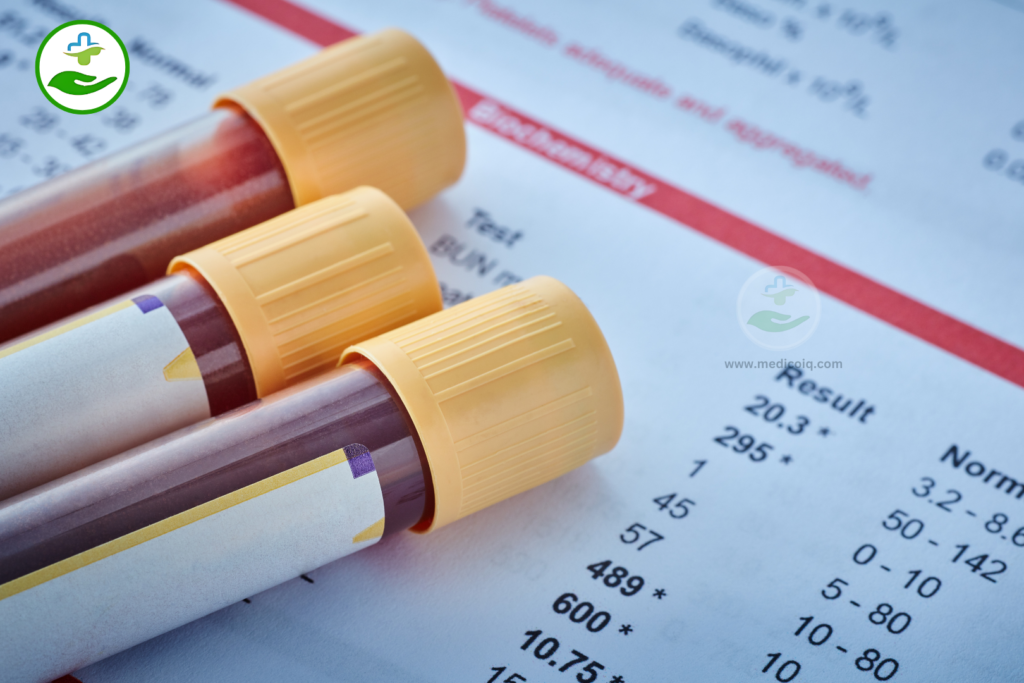
To confirm the diagnosis of HMPV, laboratory tests are essential:
- PCR Tests: Polymerase chain reaction (PCR) testing is highly sensitive and detects the virus’s genetic material. It is considered the gold standard for diagnosing What is HMPV, as it can differentiate it from other respiratory infections.
- Antigen Detection Tests: These tests are quicker than PCR and detect specific proteins of the virus. They are commonly used for rapid diagnosis, especially in severe cases where prompt treatment is needed.
Imaging (Chest X-rays)

For severe cases of What is HMPV, especially when symptoms like difficulty breathing or pneumonia are present, chest X-rays may be performed.
This imaging helps healthcare providers identify complications like pneumonia or bronchiolitis, which are caused by HMPV. While not necessary for all cases, chest X-rays are critical in guiding treatment decisions for severe What is HMPV infections.
Challenges In Diagnosing HMPV
Diagnosing What is HMPV can be challenging due to several factors:
- Symptom Overlap: Many symptoms of HMPV, such as cough, fever, and sore throat, overlap with those of other respiratory infections like the common cold, influenza, and RSV. This makes it difficult to differentiate What is HMPV from other illnesses without laboratory tests.
- Seasonal Variations: HMPV infections peak during late winter and early spring, a time when other respiratory viruses, such as influenza and RSV, are also prevalent. This seasonal overlap increases the chances of misdiagnosis when determining What is HMPV.
- Co-infections: In some cases, patients may be infected with multiple respiratory viruses simultaneously, such as HMPV alongside RSV or influenza. Co-infections can complicate the diagnosis, as symptoms may become more severe and harder to distinguish.
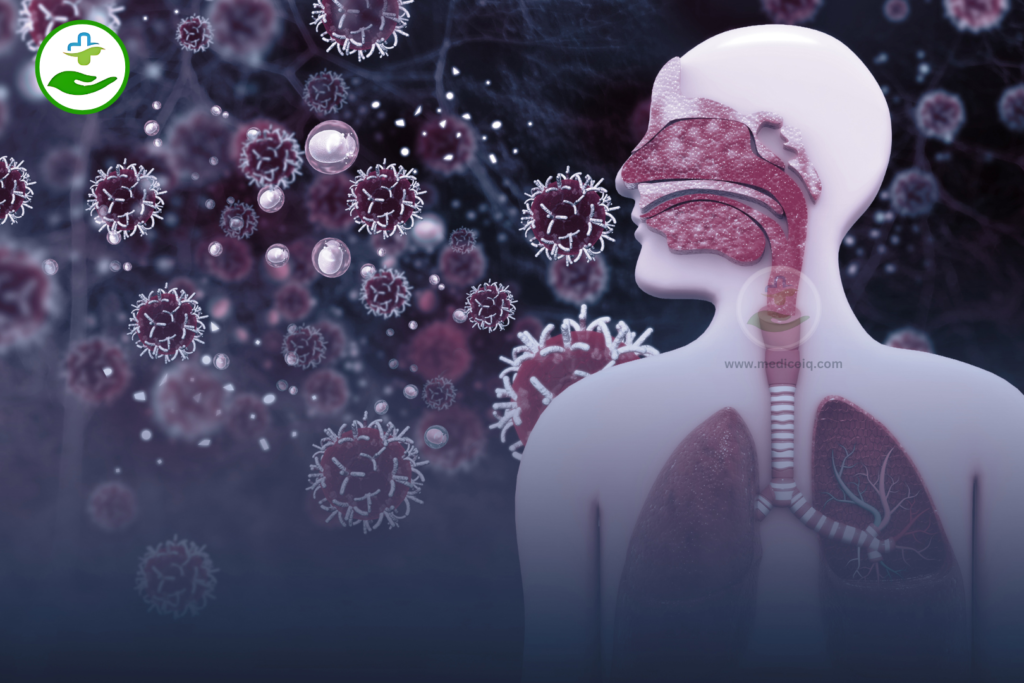
In these cases, laboratory tests are crucial in confirming What is HMPV and ensuring the patient receives the correct treatment. These diagnostic steps help healthcare professionals provide the best care possible for individuals experiencing HMPV infections.
Treatment of HMPV: Managing The Infection
There is no specific antiviral treatment for HMPV (Human Metapneumovirus). Management focuses on relieving symptoms and supporting recovery:
- Rest and hydration are key to helping the body fight the infection.
- Over-the-counter medications like fever reducers and pain relievers (e.g., acetaminophen or ibuprofen) can ease discomfort.
- Use a humidifier or inhale steam to relieve congestion and cough.
- Seek medical attention if symptoms worsen, especially in infants, elderly, or immunocompromised individuals.
Prevention Of HMPV: How To Protect Yourself
o protect yourself from HMPV (Human Metapneumovirus):
- Wash hands regularly with soap and water or use alcohol-based sanitizers.
- Avoid close contact with anyone showing cold or flu-like symptoms.
- Clean and disinfect frequently touched surfaces daily.
- Wear masks in crowded or poorly ventilated places.
- Boost immunity through a healthy diet, adequate sleep, and regular exercise.
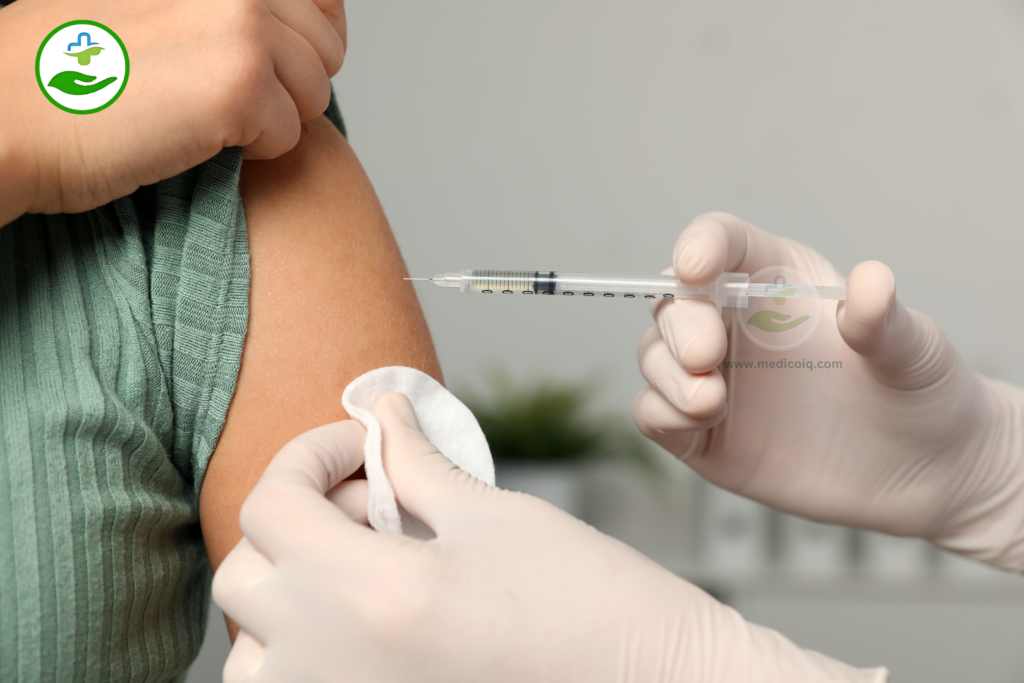
Future Prospects: Vaccine Development for What is HMPV
Currently, there is no specific vaccine available to protect against What is HMPV. However, research into vaccine development is ongoing.
A vaccine would provide long-term protection and reduce the burden of respiratory infections caused by What is HMPV. Clinical trials and studies are in progress, and the development of such vaccines holds promise for improving public health and preventing future outbreaks of What is HMPV.
By taking these preventive steps, you can significantly reduce the risk of contracting What is HMPV while we wait for future medical advancements like vaccines to further protect against this virus.

Complications of HMPV
Severe Outcomes:
- Pneumonia.
- Respiratory failure requiring intensive care.
- Secondary bacterial infections.
High-Risk Groups:
Infants, the elderly, and immunocompromised individuals face the highest risk of complications.
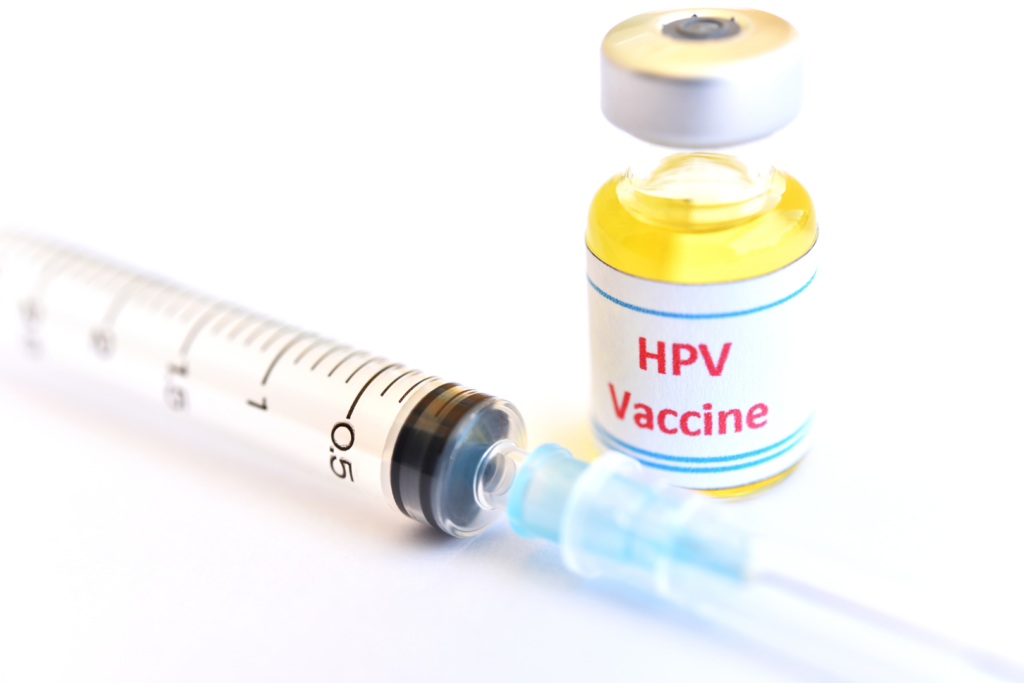
Conclusion
Human Metapneumovirus (What is HMPV) is a significant cause of respiratory infections worldwide. By understanding its causes, symptoms, and preventive measures, individuals can reduce the risk of severe outcomes.
Early diagnosis and timely intervention remain key to managing HMPV effectively. Share this blog to raise awareness and help others stay informed about What is HMPV and its impact.
FAQs
What is HMPV (Human Metapneumovirus)?
HMPV (Human Metapneumovirus) is a contagious virus that causes respiratory infections ranging from mild cold-like symptoms to serious illnesses like bronchitis and pneumonia.
How is HMPV transmitted?
HMPV spreads through respiratory droplets when an infected person coughs, sneezes, or talks. It can also spread by touching contaminated surfaces and then touching your nose, mouth, or eyes.
What are the symptoms of HMPV?
ommon symptoms include:
Cough
Runny nose
Sore throat
Fever
Wheezing
Breathing difficulty (in severe cases)
Who is most at risk for HMPV?
Infants, older adults, people with weakened immune systems, and those with chronic respiratory conditions are at the highest risk of severe complications.
Is there a vaccine for HMPV?
Currently, no approved vaccine is available for HMPV. However, research and clinical trials are ongoing to develop one in the future.

